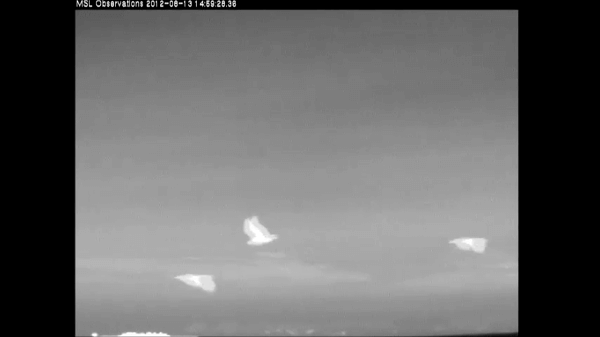News Release from windfair.net
Wind Industry Profile of
Night Vision For Bird Protection
The requirements for the construction of onshore wind farms in breeding grounds and habitats of certain bird species are high. During the last few years enormous progress has been made to reduce the impact of wind farms on birds and bats. Thus, in times of particularly strong bird migration or at nesting times, turbines must temporarily be switched off in order to not endanger an unnecessarily large number of birds.
The detection of the birds in the planned location of a wind farm is done by biologists, who stand in a field and take notes about what they see. For offshore wind farms, scientists have hitherto traveled by boat, but they can only observe in daylight if the weather allows it. American researchers are now seeking to provide relief to this problem by using thermal imaging to identify birds and bats near offshore wind farms.
First they use night vision cameras capturing infrared light invisible to the human eye. Researchers at the Pacific Northwest National Laboratory (PNNL) have now developed a software called ThermalTracker, which automatically categorizes birds and bats using thermal videos.
"ThermalTracker can help developers and regulators make informed decisions about siting and operating offshore wind projects," says PNNL engineer Shari Matzner, who leads ThermalTracker's development. "We need scientific tools like this to better understand how offshore wind turbines can coexist with birds and bats."
The software is to determine whether there are many birds or bats near a planned offshore farm and whether they are directly affected by an already built project. If this is the case, the officials can make adjustments to the site or a change in the running operation.
Scientists have been using thermal imaging cameras to observe bats that are active at night and weren't visible in traditional videos for a long time. But while thermal cameras can see the outline of the animal, they do not provide clear images or even color making accurate identification difficult. This is where the new software comes into play. It is intended to identify the animals clearly by means of specific flight movements.
The video shows the reserchers' work (Source: PNNL)
At least, that’s the theory. In practice, the software will be tested this summer by biologists of the Biodiversity Research Institute. To do this, the researchers compare the results of the software with their own field observations off the coast of Maine in the US.
"This is an extraordinary collaboration between technology developers, engineers and wildlife biologists who are working together on cutting-edge technology," said Wing Goodale, deputy director of Biodiversity Research Institute. "These cameras could provide a reliable method of detecting bird and bat response to offshore wind projects, where it is not possible to conduct traditional wildlife monitoring."
The algorithms of the software recognize two characteristics: the exact path that birds or bats fly from A to B and how often their wings beat up and down. Afterwards, the program can determine whether the observed animals are bats or belong to bird families such as seagulls, terns or swallows.

This is how the images of the thermal videos look like (Source: PNNL)
Earlier versions of the software were correct in 82 percent of the cases – with the computer working up to five times faster than humans. And while the PNNL researchers are already working on another update creating 3D videos, biologists will document the consistency of the observations and help to further improve the algorithm. Thus in the future, bird strike will only play a subordinate role as an argument of wind power opponents.
- Author:
- Katrin Radtke
- Email:
- press@windfair.net
- Keywords:
- bird strike, research, offshore, bird, bat
























